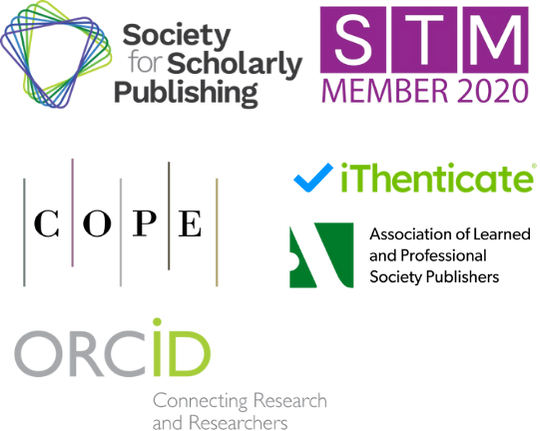Second Auxiliary Ligand Effects on Coordination Polymer Structure: Regulating Metal-Organic Framework Properties
DOI:
https://doi.org/10.71222/ec1ws165Keywords:
metal-organic frameworks, auxiliary ligands, coordination polymers, structural control, modulators, reticular chemistryAbstract
Metal-organic frameworks (MOFs) represent a revolutionary class of porous materials with exceptional tunability in their structural and functional properties. The incorporation of second auxiliary ligands into coordination polymer systems has emerged as a powerful strategy for controlling framework architecture, porosity, and functionality. This review examines the fundamental principles governing how auxiliary ligands influence MOF formation, structural polymorphism, and resultant properties. The modulator-driven approach enables precise control over crystal growth kinetics, defect formation, and framework topology. Second auxiliary ligands demonstrate remarkable capability in directing interpenetration patterns, controlling pore dimensions, and enhancing chemical stability. Furthermore, these ligands significantly impact functional properties including gas adsorption capacity, catalytic activity, and biological inhibition mechanisms. The strategic selection of auxiliary ligands with varying geometries, electronic properties, and coordination preferences allows for systematic property optimization. Recent advances in reticular chemistry have revealed that auxiliary ligand effects extend beyond simple structure direction to encompass sophisticated control over framework flexibility, guest accommodation, and responsive behavior. This comprehensive analysis highlights the critical role of auxiliary ligands in advancing MOF design principles and expanding their applications across diverse technological domains.
References
1. F. Drache, V. Bon, I. Senkovska, J. Getzschmann, and S. Kaskel, "The modulator driven polymorphism of Zr(IV) based metal–organic frameworks," Philos. Trans. R. Soc. A, vol. 375, no. 2084, 2017, doi: 10.1098/rsta.2016.0027.
2. Y.-Y. Jia, X.-T. Liu, W.-H. Wang, L.-Z. Zhang, Y.-H. Zhang, and X.-H. Bu, "A Sr 2+ -metal–organic framework with high chemical stability: synthesis, crystal structure and photoluminescence property," Philos. Trans. R. Soc. A, vol. 375, no. 2084, pp. 20160026–20160026, 2016, doi: 10.1098/rsta.2016.0026.
3. K. Sumida, D. L. Rogow, J. A. Mason, T. M. McDonald, E. D. Bloch, and Z. R. Herm et al., "Carbon Dioxide Capture in Metal–Organic Frameworks," Chem. Rev., vol. 112, no. 2, pp. 724–781, 2011, doi: 10.1021/cr2003272.
4. F. Ding, C. Hung, J. K. Whalen, L. Wang, Z. Wei, and L. Zhang et al., "Potential of chemical stabilizers to prolong urease inhi-bition in the soil–plant system," J. Plant Nutr. Soil Sci., vol. 185, no. 3, pp. 384–390, 2022, doi: 10.1002/jpln.202100314.
5. D. G. Madden, H. S. Scott, A. Kumar, K.-J. Chen, R. Sanii, and A. Bajpai et al., "Flue-gas and direct-air capture of CO2 by porous metal–organic materials," Philos. Trans. R. Soc. A, vol. 375, no. 2084, p. 20160025, 2017, doi: 10.1098/rsta.2016.0025.
6. H. Deng, S. Grunder, K. E. Cordova, C. Valente, H. Furukawa, and M. Hmadeh et al., "Large-Pore Apertures in a Series of Metal-Organic Frameworks," Science, vol. 336, no. 6084, pp. 1018–1023, 2012, doi: 10.1126/science.1220131.
7. G. Xie, W. Guo, Z. Fang, Z. Duan, X. Lang, D. Liu, G. Mei, Y. Zhai, X. Sun, and X. Lu, "Dual-metal sites drive tandem electro-catalytic CO₂ to C₂⁺ products," Angew. Chem., vol. 136, no. 47, p. e202412568, 2024, doi: 10.1002/ange.202412568.
8. Y. Song, X. Zhang, Z. Xiao, Y. Wang, P. Yi, M. Huang, and L. Zhang, “Coupled amorphous NiFeP/cystalline Ni3S2 nanosheets enables accelerated reaction kinetics for high current density seawater electrolysis,” Appl. Catal. B: Environ. Energy, vol. 352, p. 124028, 2024, doi: 10.1016/j.apcatb.2024.124028.
9. G. Zhang, Eyal Gadot, Gal Gan-Or, M. Baranov, Tal Tubul, and A. Neyman et al., "Self-Assembly and Ionic-Lattice-like Sec-ondary Structure of a Flexible Linear Polymer of Highly Charged Inorganic Building Blocks," J. Am. Chem. Soc., vol. 142, no. 16, pp. 7295–7300, 2020, doi: 10.1021/jacs.0c01486.
10. Y. Yang, P. Fernández-Seriñán, Borja Ortín-Rubio, P. Samanta, F. Gándara, and D. M. Proserpio et al., "Merging and Clipping Nets for the Synthesis of Three- and Two-Merged Net Metal–Organic Frameworks," J. Am. Chem. Soc., vol. 147, no. 1, pp. 1344–1355, 2024, doi: 10.1021/jacs.4c15936.
11. F. Ding, C. Ma, W.-L. Duan, and J. Luan, "Second auxiliary ligand induced two coppor-based coordination polymers and urease inhibition activity," J. Solid State Chem., vol. 331, pp. 124537–124537, 2023, doi: 10.1016/j.jssc.2023.124537.
12. X.-L. Tong, H.-L. Lin, J.-H. Xin, F. Liu, M. Li, and X.-P. Zhu, "Recent Advances as Materials of Functional Metal-Organic Frameworks," J. Nanomater., vol. 2013, pp. 1–11, 2013, doi: 10.1155/2013/616501.
13. A. Ejsmont, J. Andreo, A. Lanza, A. Galarda, L. Macreadie, and S. Wuttke et al., "Applications of reticular diversity in metal–organic frameworks: An ever-evolving state of the art," Coord. Chem. Rev., vol. 430, p. 213655, 2021, doi: 10.1016/j.ccr.2020.213655.
14. Y. Wang, S.-Q. Shen, J.-H. Zhou, D. Li, J. Zhou, and M. Ye et al., "Two 2-fold interpenetrated polythreading networks assembled by 4,4′-sulfonyldibenzoic acid and N-donor ligand," J. Coord. Chem., vol. 68, no. 10, pp. 1676–1687, 2015, doi: 10.1080/00958972.2015.1026264.
15. F. Ding, N. Su, C. Ma, B. Li, W.-L. Duan, and J. Luan, "Fabrication of two novel two-dimensional copper-based coordination polymers regulated by the 'V'-shaped second auxiliary ligands as high-efficiency urease inhibitors," Inorg. Chem. Commun., vol. 170, p. 113319, 2024, doi: 10.1016/j.inoche.2024.113319.
16. D.-W. Lim and H. Kitagawa, "Proton Transport in Metal–Organic Frameworks," Chem. Rev., vol. 120, no. 16, pp. 8416–8467, 2020, doi: 10.1021/acs.chemrev.9b00842.
Downloads
Published
Issue
Section
License
Copyright (c) 2025 Reid A. Thornton (Author)

This work is licensed under a Creative Commons Attribution 4.0 International License.


